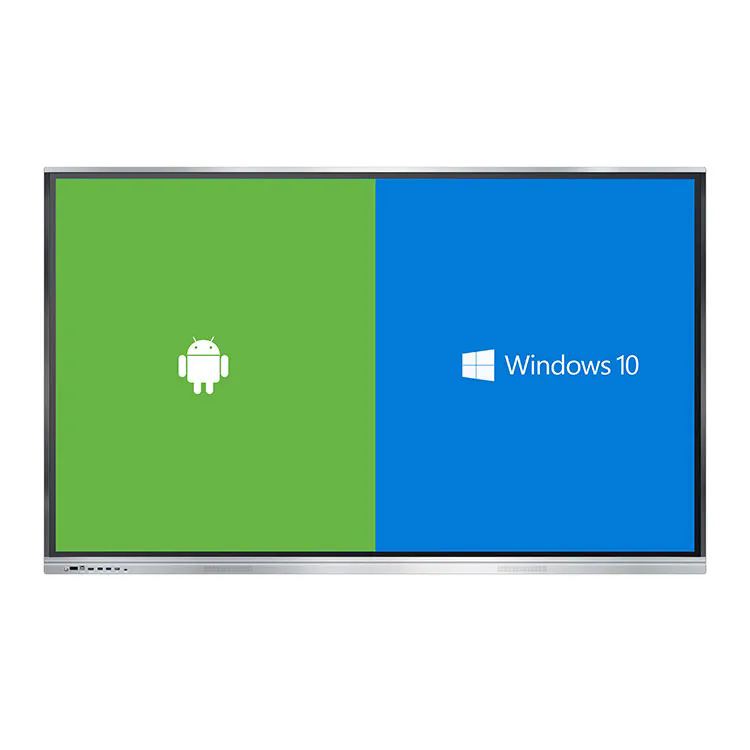Why Is Digital Signage Revolutionizing Modern Communication?
2024-11-28
In a world where grabbing attention has become increasingly challenging, digital signage stands out as a powerful tool to engage audiences. From retail stores and corporate offices to transportation hubs and public spaces, digital signage has transformed the way we communicate and share information. But what makes this technology so effective, and why is it becoming an essential part of modern communication strategies? Let’s explore the factors driving the digital signage revolution.
1. What Is Digital Signage?
Digital signage refers to the use of electronic displays—such as LCD, LED, or projection screens—to deliver dynamic content, including advertisements, announcements, entertainment, or educational material. Unlike traditional static signage, digital signage allows for real-time updates, interactive capabilities, and visually rich presentations that captivate viewers.
2. Why Is Digital Signage So Effective?
The effectiveness of digital signage lies in its ability to combine technology, creativity, and strategic messaging. Here’s why it works so well:
- Dynamic Content: Digital signage can display videos, animations, and live feeds, making the content more engaging and memorable than static posters or banners.
- Flexibility and Real-Time Updates: Businesses can quickly update digital signage with new promotions, announcements, or changes, ensuring the information is always relevant.
- Enhanced Visual Appeal: Bright screens and high-resolution displays attract attention and can be customized to match the environment or branding needs.
- Targeted Messaging: Digital signage can be programmed to show specific content based on the time of day, audience demographics, or location, increasing the relevance of the message.
3. How Is Digital Signage Used Across Industries?
Digital signage is a versatile tool used in various industries for different purposes. Here are a few examples:
- Retail: Stores use digital signage to highlight sales, promote new products, and create immersive shopping experiences. Interactive touch screens can even provide personalized product recommendations.
- Hospitality: Hotels and restaurants use digital signage for displaying menus, event schedules, and wayfinding information. Digital displays in waiting areas keep guests informed and entertained.
- Corporate: Offices use digital signage to share company updates, highlight employee achievements, or provide dashboards with real-time data.
- Transportation: Airports, train stations, and bus terminals rely on digital signage to display schedules, gate information, and safety messages, ensuring smooth communication with travelers.
- Education: Schools and universities use digital signage for announcements, campus maps, and event promotions, fostering better communication within the community.
4. What Are the Benefits of Digital Signage?
Digital signage offers numerous advantages over traditional communication methods:
- Cost-Effectiveness: Although the initial investment might be higher, digital signage eliminates the recurring cost of printing and distributing materials, offering long-term savings.
- Increased Engagement: Dynamic and visually appealing content captures more attention and drives higher engagement rates compared to static displays.
- Eco-Friendly Solution: By reducing the need for paper and physical materials, digital signage contributes to more sustainable business practices.
- Enhanced Interactivity: Touchscreen-enabled digital signage can serve as a self-service kiosk, providing personalized experiences and reducing the need for staff intervention.
- Improved Analytics: Digital signage systems often include software that tracks viewer engagement and measures the effectiveness of campaigns, helping businesses optimize their strategies.
5. What Are the Challenges of Implementing Digital Signage?
While digital signage offers significant benefits, it’s not without challenges:
- Initial Costs: The hardware, software, and installation expenses can be high for businesses starting from scratch.
- Content Management: Regularly updating content and ensuring it aligns with the audience’s preferences requires effort and expertise.
- Technical Issues: Display malfunctions or connectivity problems can disrupt communication, especially in high-traffic areas.
6. Why Is Digital Signage the Future of Communication?
As technology evolves, digital signage continues to adapt and grow. Innovations like AI-powered personalization, cloud-based content management systems, and integration with the Internet of Things (IoT) are expanding its capabilities. These advancements make digital signage not only a tool for delivering messages but also a platform for creating immersive and interactive experiences.
The demand for engaging, flexible, and eco-friendly communication methods will only grow, solidifying digital signage as a cornerstone of modern communication.
7. Conclusion
Digital signage is more than just a screen—it’s a dynamic, adaptable, and powerful medium that connects businesses and organizations with their audiences in meaningful ways. Whether you’re a retailer seeking to boost sales, an airport managing traveler flow, or a corporate office enhancing internal communication, digital signage offers endless possibilities.
So, is your business ready to embrace the future of communication? With digital signage, the opportunities are as limitless as your imagination.



